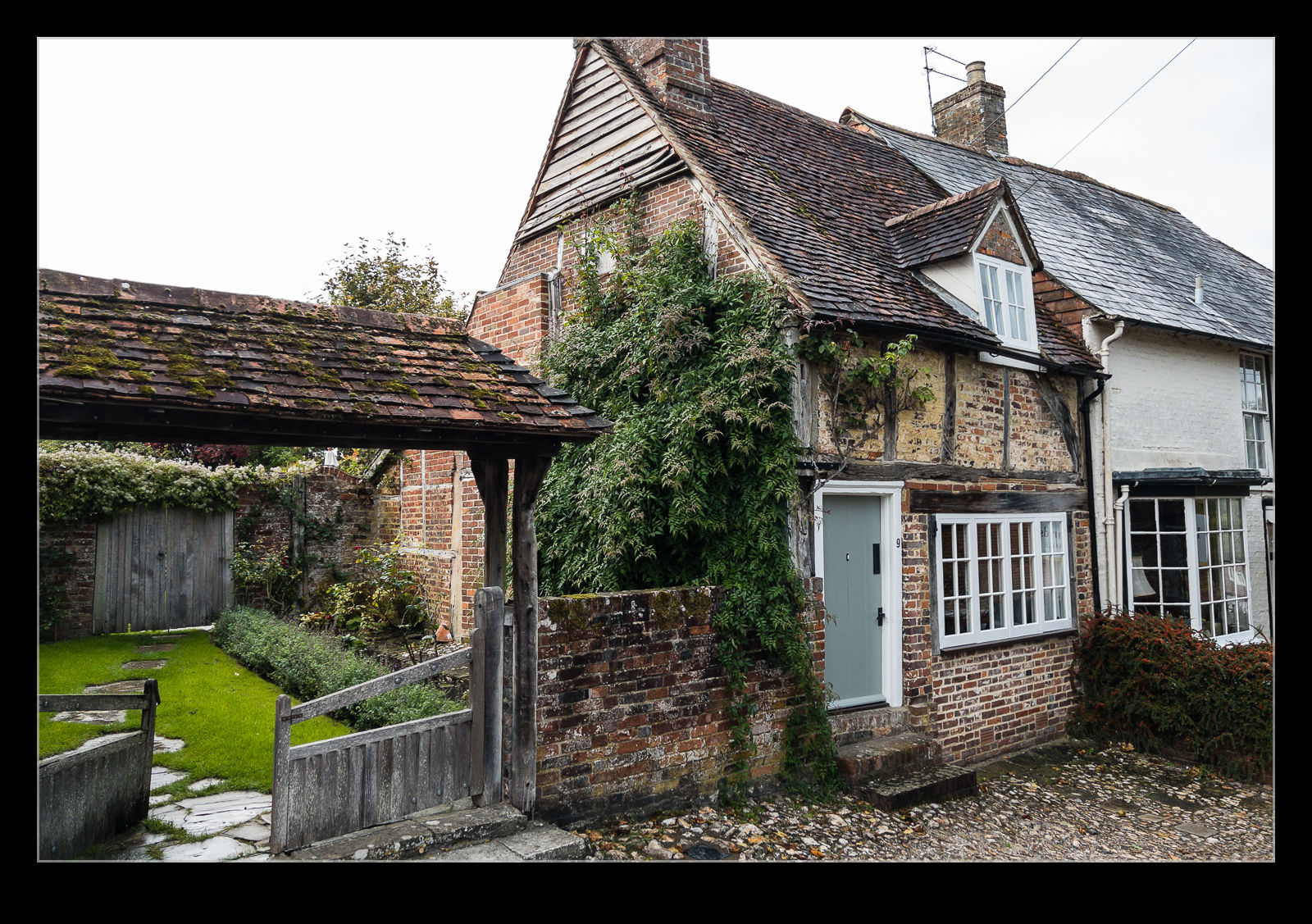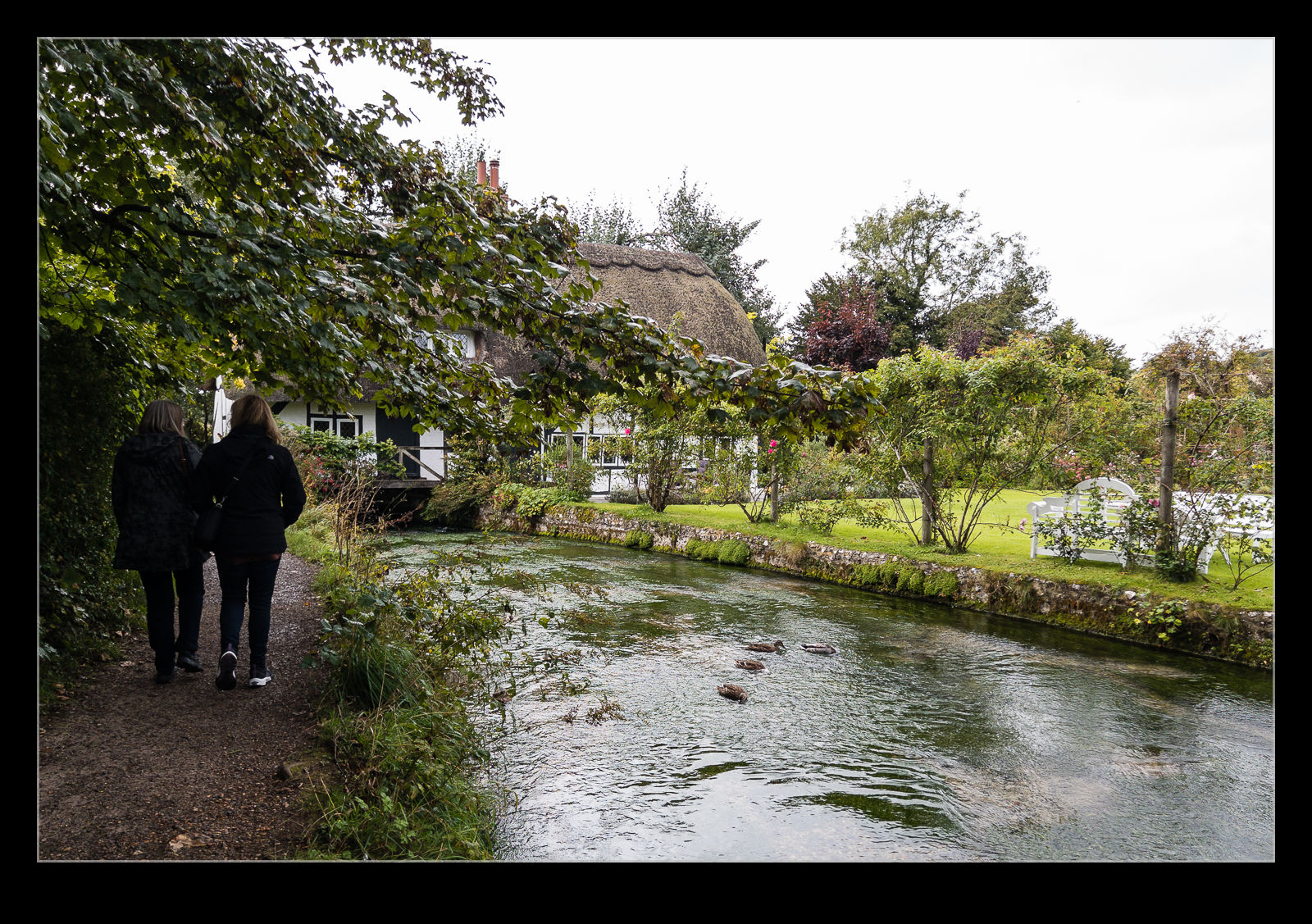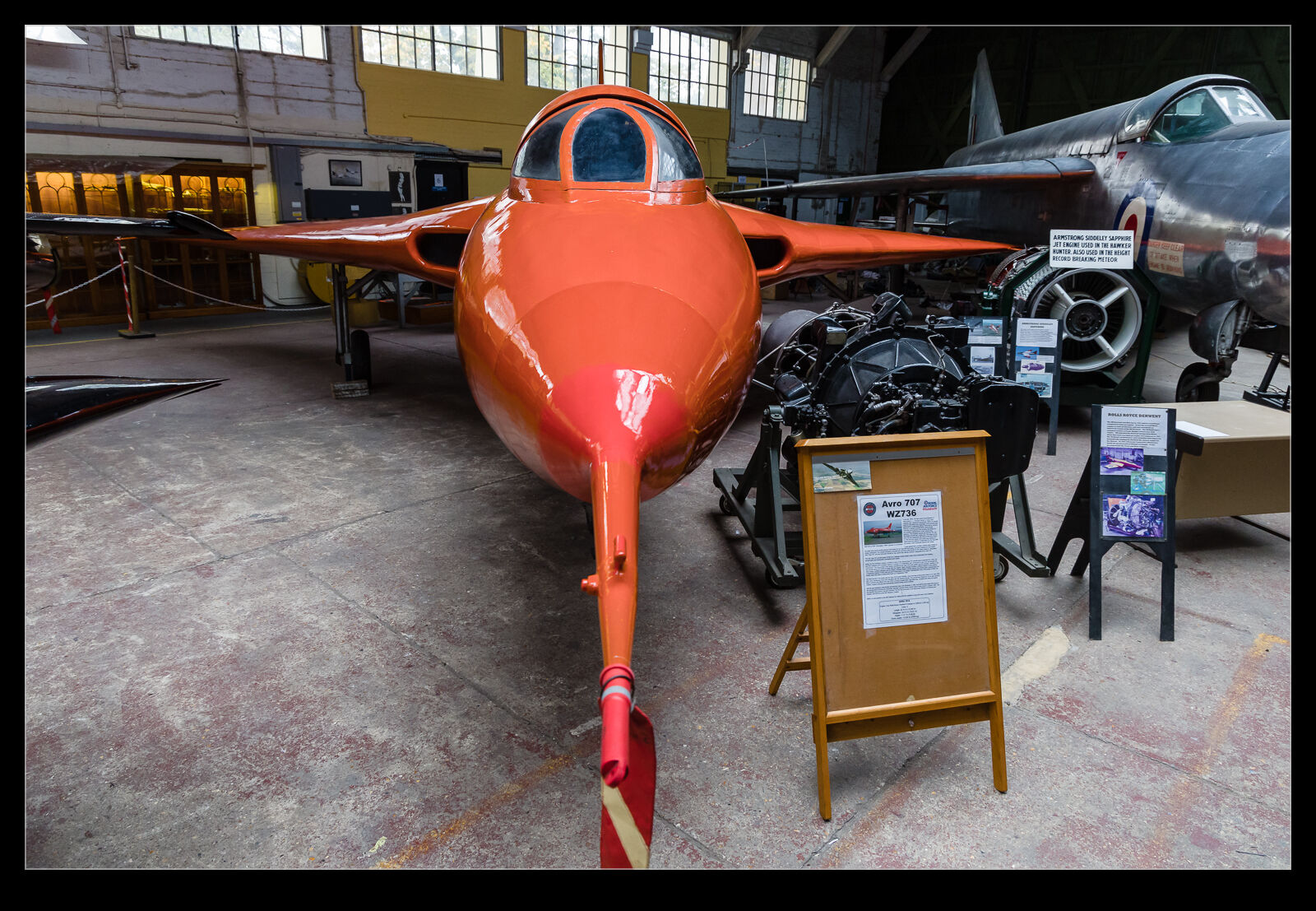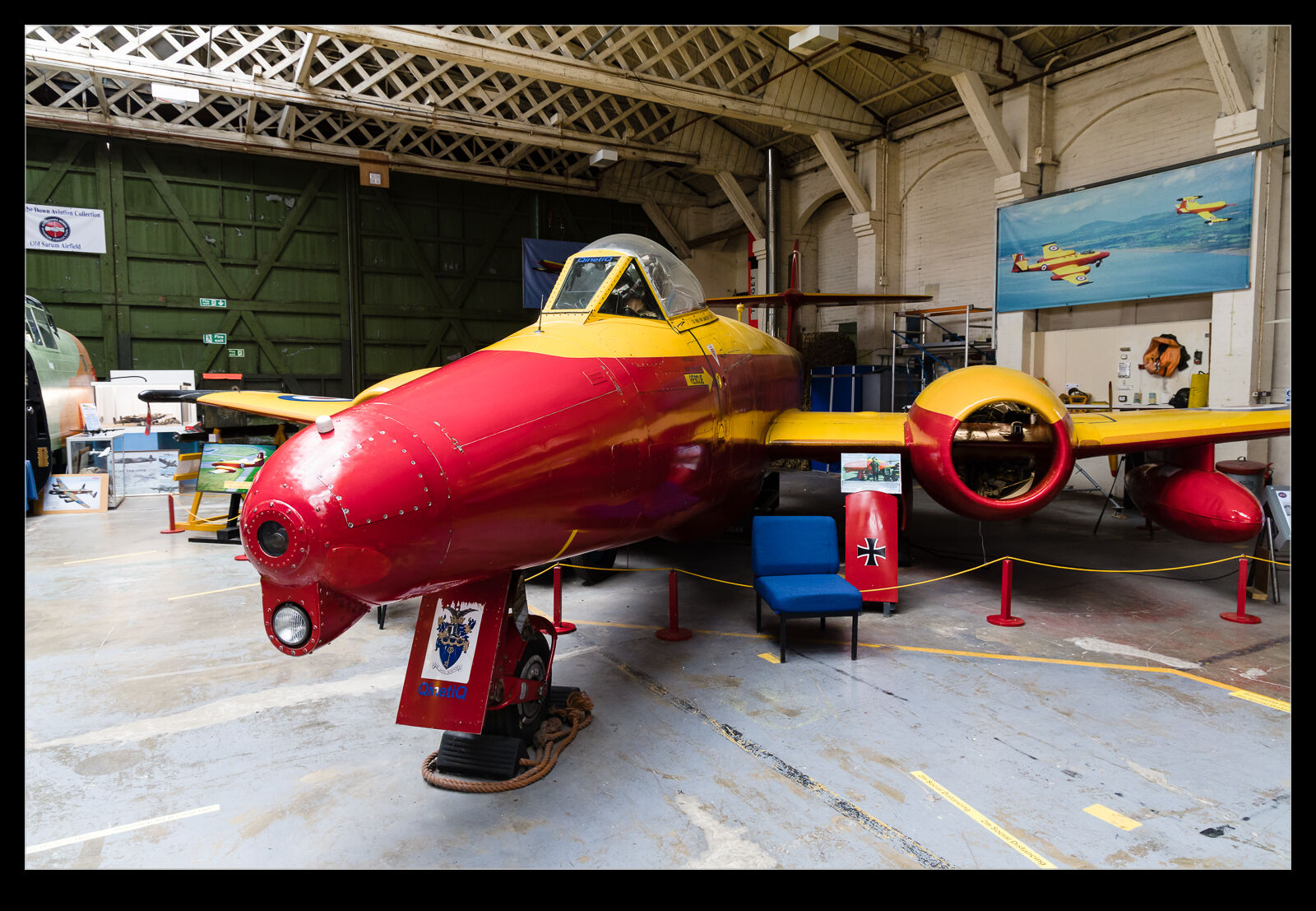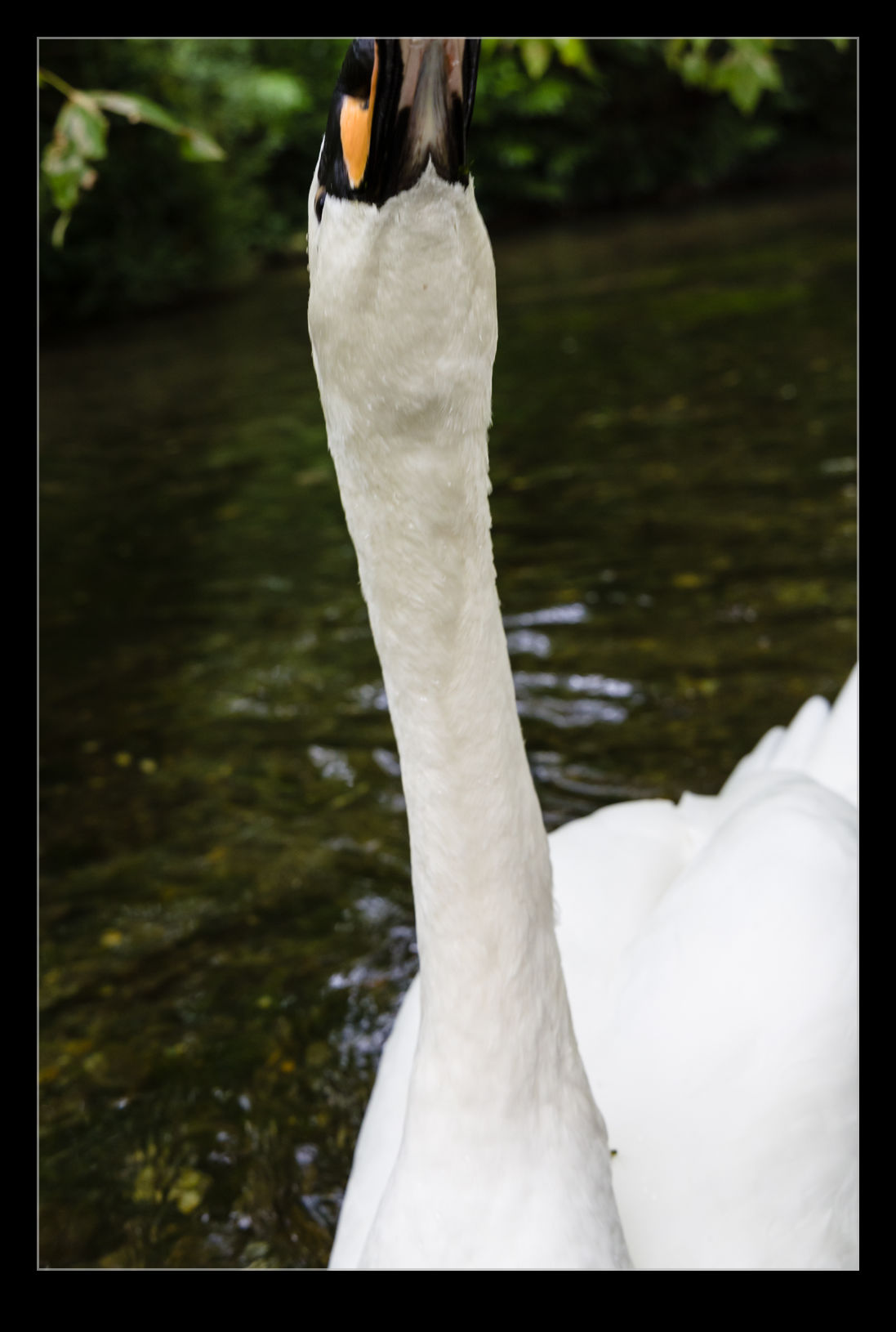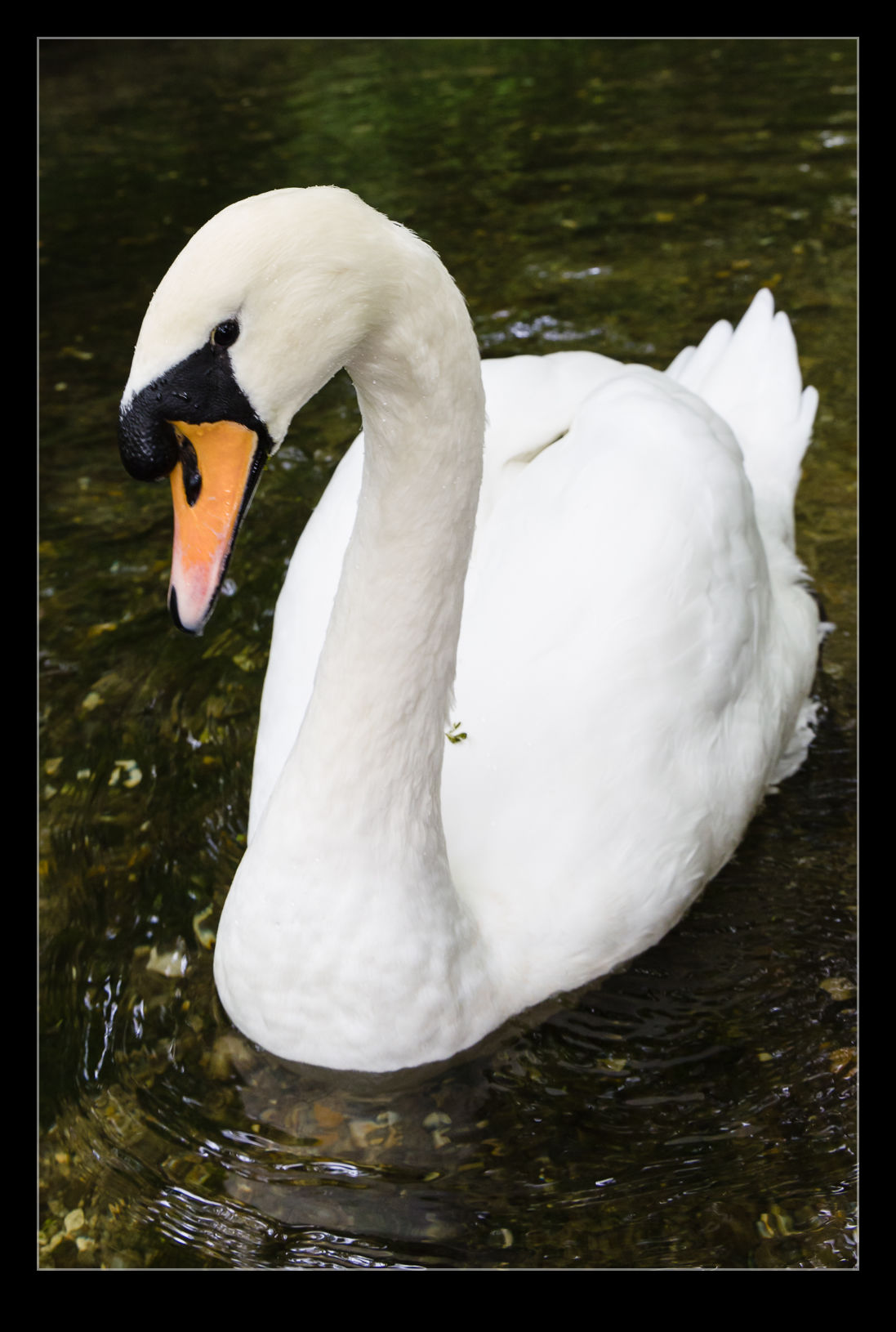 A couple of years ago, I was taking a road trip across the Cascades and I came upon a large dish alongside the road. It was a surprise and ended up being a blog post. I guess it is a little less spontaneous to search out a dish but, while I was over at Middle Wallop, meeting up with my friend Paul, I knew I was near the old airfield at Chilbolton. This had been an RAF base and then was used for test flying by Supermarine and Folland. What I didn’t know until I looked it up was that the airfield was taken over for use as a radio telescope after it closed to flight operations. I decided to swing by and see the dish. As I came over the hill, I could see it in the valley but the road was narrow and there was nowhere to stop. I got to the gate and a big sign advertised that random visitors were not welcome so I had to make do with a shot from the gate.
A couple of years ago, I was taking a road trip across the Cascades and I came upon a large dish alongside the road. It was a surprise and ended up being a blog post. I guess it is a little less spontaneous to search out a dish but, while I was over at Middle Wallop, meeting up with my friend Paul, I knew I was near the old airfield at Chilbolton. This had been an RAF base and then was used for test flying by Supermarine and Folland. What I didn’t know until I looked it up was that the airfield was taken over for use as a radio telescope after it closed to flight operations. I decided to swing by and see the dish. As I came over the hill, I could see it in the valley but the road was narrow and there was nowhere to stop. I got to the gate and a big sign advertised that random visitors were not welcome so I had to make do with a shot from the gate.
Category Archives: Travel
Is Alresford Too Pretty To Be Real?
 A short distance from Winchester is the little town of Alresford. I had flown over it as a youngster but had never actually visited and, when our friends suggested it as a good place to meet up while we were visiting, we went with their suggestion. The center of the town is quite picturesque but some of the older parts of the town are just too like a postcard to be credible. The oldest buildings include some down by the river where the old mill was. As you walked along the path by the water, it was hard to believe that some of these buildings hadn’t been created by a set designer for a period drama. This was a theme for our whole visit with so many villages with postcard-like houses.
A short distance from Winchester is the little town of Alresford. I had flown over it as a youngster but had never actually visited and, when our friends suggested it as a good place to meet up while we were visiting, we went with their suggestion. The center of the town is quite picturesque but some of the older parts of the town are just too like a postcard to be credible. The oldest buildings include some down by the river where the old mill was. As you walked along the path by the water, it was hard to believe that some of these buildings hadn’t been created by a set designer for a period drama. This was a theme for our whole visit with so many villages with postcard-like houses.
Avro 707
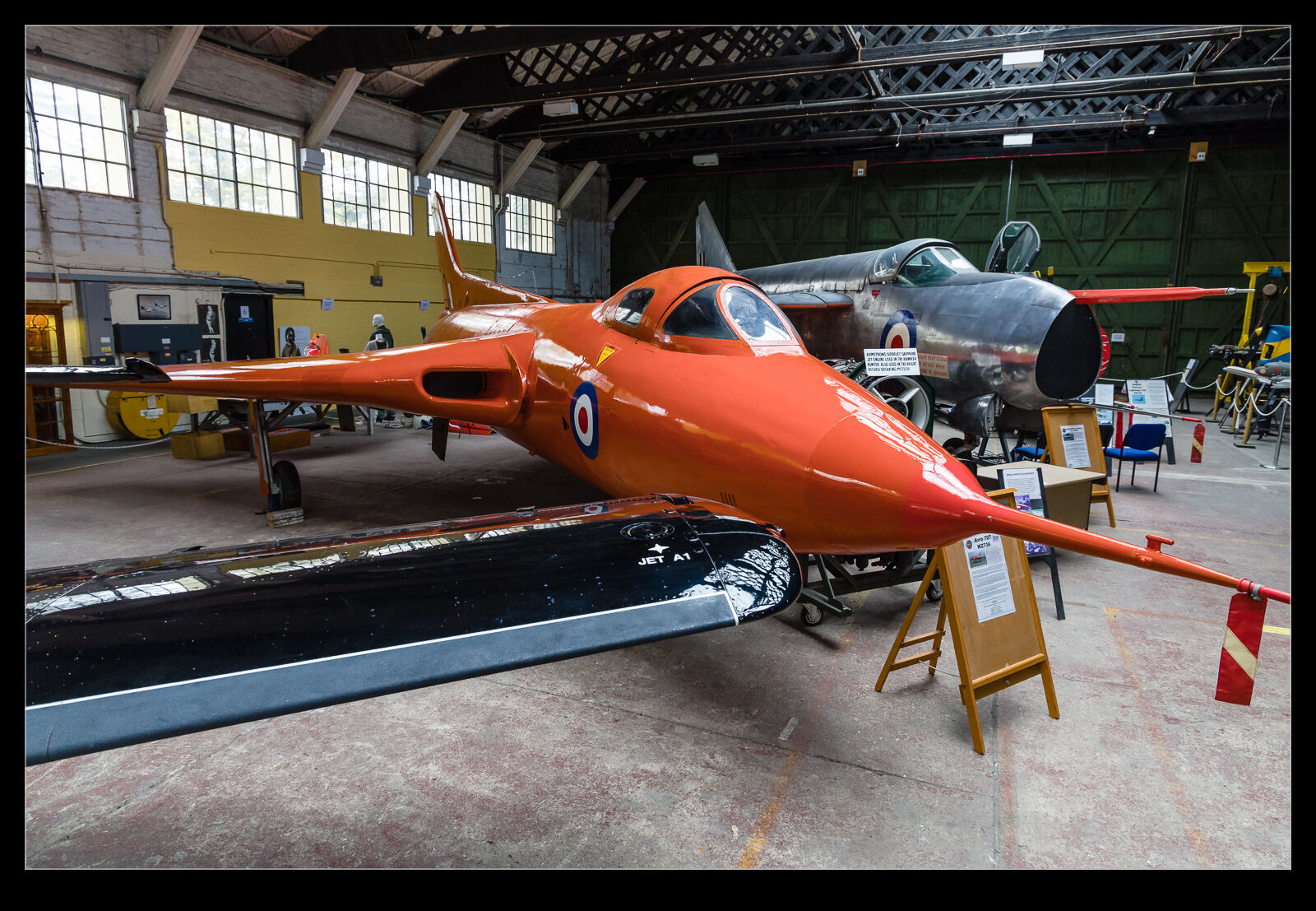 The development of the Vulcan required a lot of concept testing before the full size jets were built. Avro built a series of smaller scale delta winged jets to work out some of the issues under the name Avro 707. One of these lives at Old Sarum in the Boscombe Down Aviation Collection. It is painted a bright orange color and, while tucked in a dark hangar, it still looks striking. It would be great to get some elevation to show off the delta planform of the jet but still happy to have managed to see it. I was rather close to it so needed to shoot a variety of shots to stitch together afterwards which only worked so well.
The development of the Vulcan required a lot of concept testing before the full size jets were built. Avro built a series of smaller scale delta winged jets to work out some of the issues under the name Avro 707. One of these lives at Old Sarum in the Boscombe Down Aviation Collection. It is painted a bright orange color and, while tucked in a dark hangar, it still looks striking. It would be great to get some elevation to show off the delta planform of the jet but still happy to have managed to see it. I was rather close to it so needed to shoot a variety of shots to stitch together afterwards which only worked so well.
A Middle Wallop Gazelle Is Worth A Wait
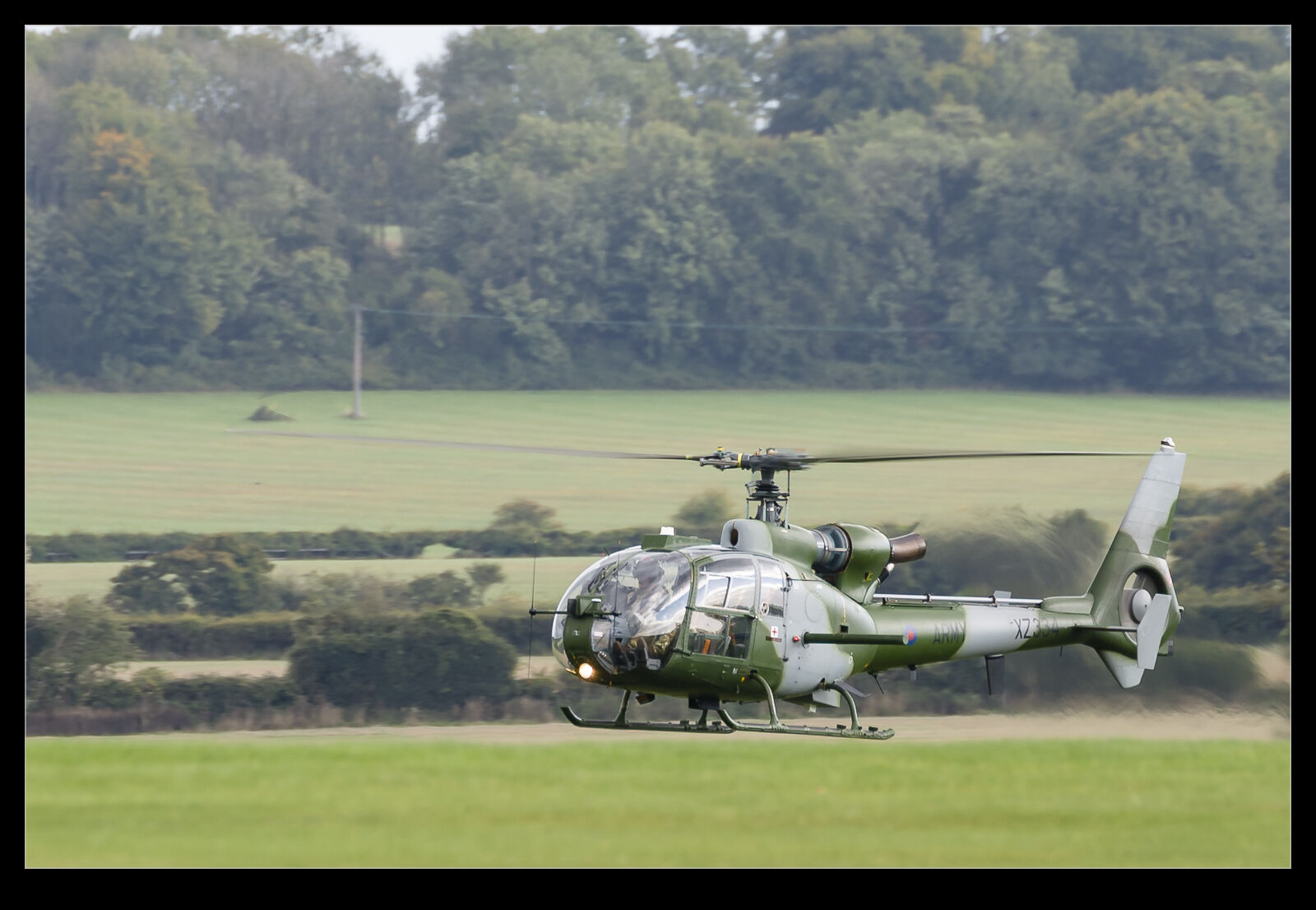 I was ready to leave Middle Wallop when a look at ADSB told me that a Gazelle was operating in the vicinity. The Gazelles are becoming a rarity these days so this seemed worth waiting for. After a while, it vanished from ADSB and I was beginning to think it had landed elsewhere. Fortunately, it popped up again, very close this time. I was coming straight for me. Unfortunately, it turned south and skirted around the airfield. I could just see it in the distance.
I was ready to leave Middle Wallop when a look at ADSB told me that a Gazelle was operating in the vicinity. The Gazelles are becoming a rarity these days so this seemed worth waiting for. After a while, it vanished from ADSB and I was beginning to think it had landed elsewhere. Fortunately, it popped up again, very close this time. I was coming straight for me. Unfortunately, it turned south and skirted around the airfield. I could just see it in the distance.
 Then it climbed up to the east before turning and conducting an autorotation to the field. It landed away from me and beyond a ridge so out of sight. I moved back to the balcony to see if I could see anything and was rewarded with it taxiing across the field in the distance. It wasn’t long before it was behind the fencing heading to its ramp. Still, while not a close encounter, it might be the last time I see one in UK service.
Then it climbed up to the east before turning and conducting an autorotation to the field. It landed away from me and beyond a ridge so out of sight. I moved back to the balcony to see if I could see anything and was rewarded with it taxiing across the field in the distance. It wasn’t long before it was behind the fencing heading to its ramp. Still, while not a close encounter, it might be the last time I see one in UK service.
Handbrake Turn In A Ferry
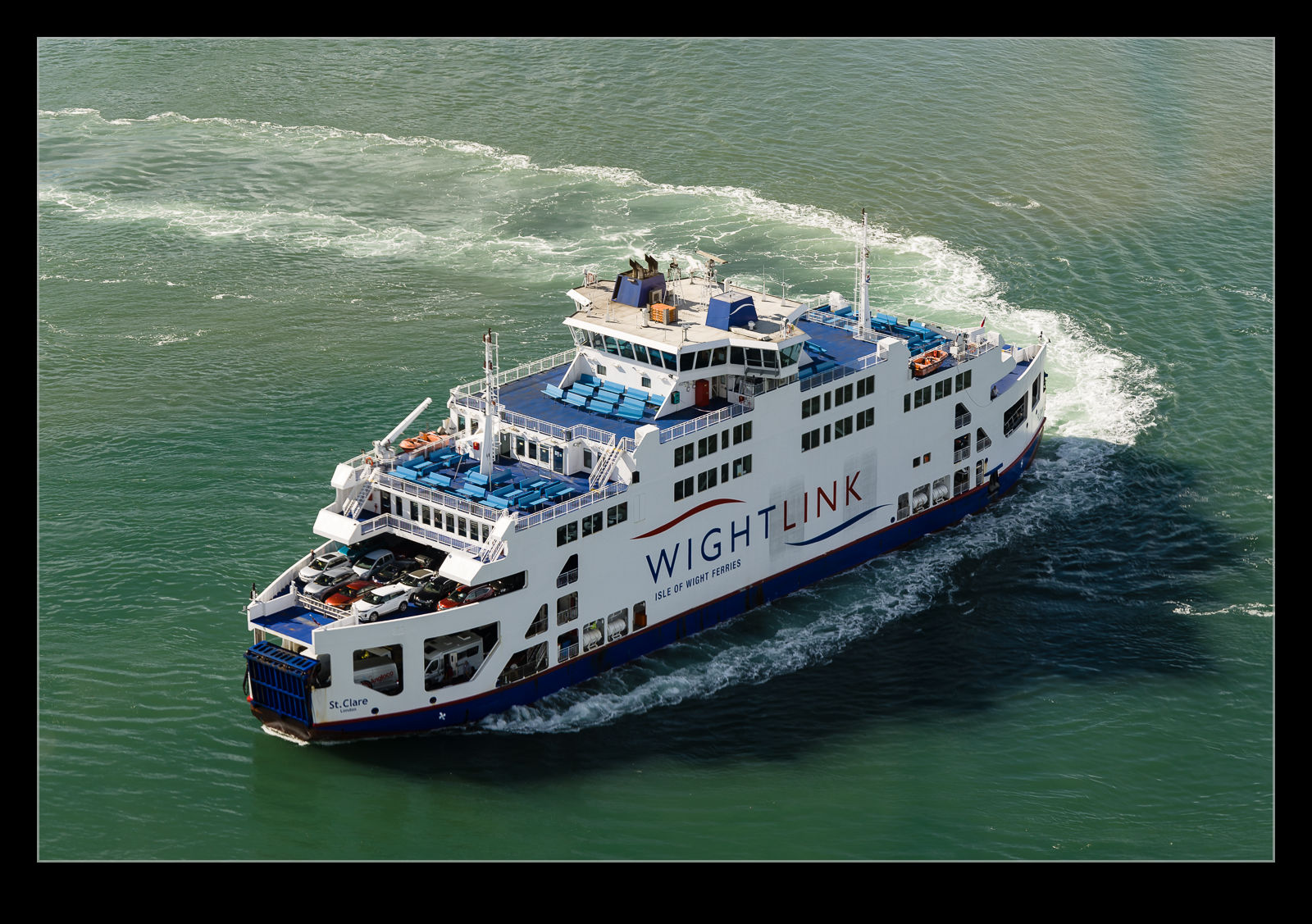 When you look at something like a ferry that can hold 180 cars and a thousand passengers, you don’t immediately think of agility and maneuverability. However, the Wightlink ferries that run between Portsmouth and the Isle of Wight have surprising capabilities. The entry to Portsmouth Harbour is followed by a rapid change of direction to get to the terminal at Gunwharf. From the Spinnaker Tower, you get a great view of how rapidly the ferry can be thrown around. The St Clare is a bi-directional ship so it doesn’t back in like Victoria of Wight. Instead, it looks like it is doing a handbrake turn. The wake ends up almost combing out of the side of the boat!
When you look at something like a ferry that can hold 180 cars and a thousand passengers, you don’t immediately think of agility and maneuverability. However, the Wightlink ferries that run between Portsmouth and the Isle of Wight have surprising capabilities. The entry to Portsmouth Harbour is followed by a rapid change of direction to get to the terminal at Gunwharf. From the Spinnaker Tower, you get a great view of how rapidly the ferry can be thrown around. The St Clare is a bi-directional ship so it doesn’t back in like Victoria of Wight. Instead, it looks like it is doing a handbrake turn. The wake ends up almost combing out of the side of the boat!
Drone Control Meatbox
 When Llanbedr was the home for a bunch of drones, it also had some old airframes used to support the drone operations. The Sea Vixen was one of the more famous jets saved from that program but the Boscombe collection has a drone support Meteor. The red and yellow paint scheme is not subtle but it looks good, particularly in the dark hangar at Old Sarum where the collection lives. I can’t claim to love the Meatbox but I do find it an interesting jet and seeing one in such good condition is a treat.
When Llanbedr was the home for a bunch of drones, it also had some old airframes used to support the drone operations. The Sea Vixen was one of the more famous jets saved from that program but the Boscombe collection has a drone support Meteor. The red and yellow paint scheme is not subtle but it looks good, particularly in the dark hangar at Old Sarum where the collection lives. I can’t claim to love the Meatbox but I do find it an interesting jet and seeing one in such good condition is a treat.
Rwanda Air With the Wrong Lens
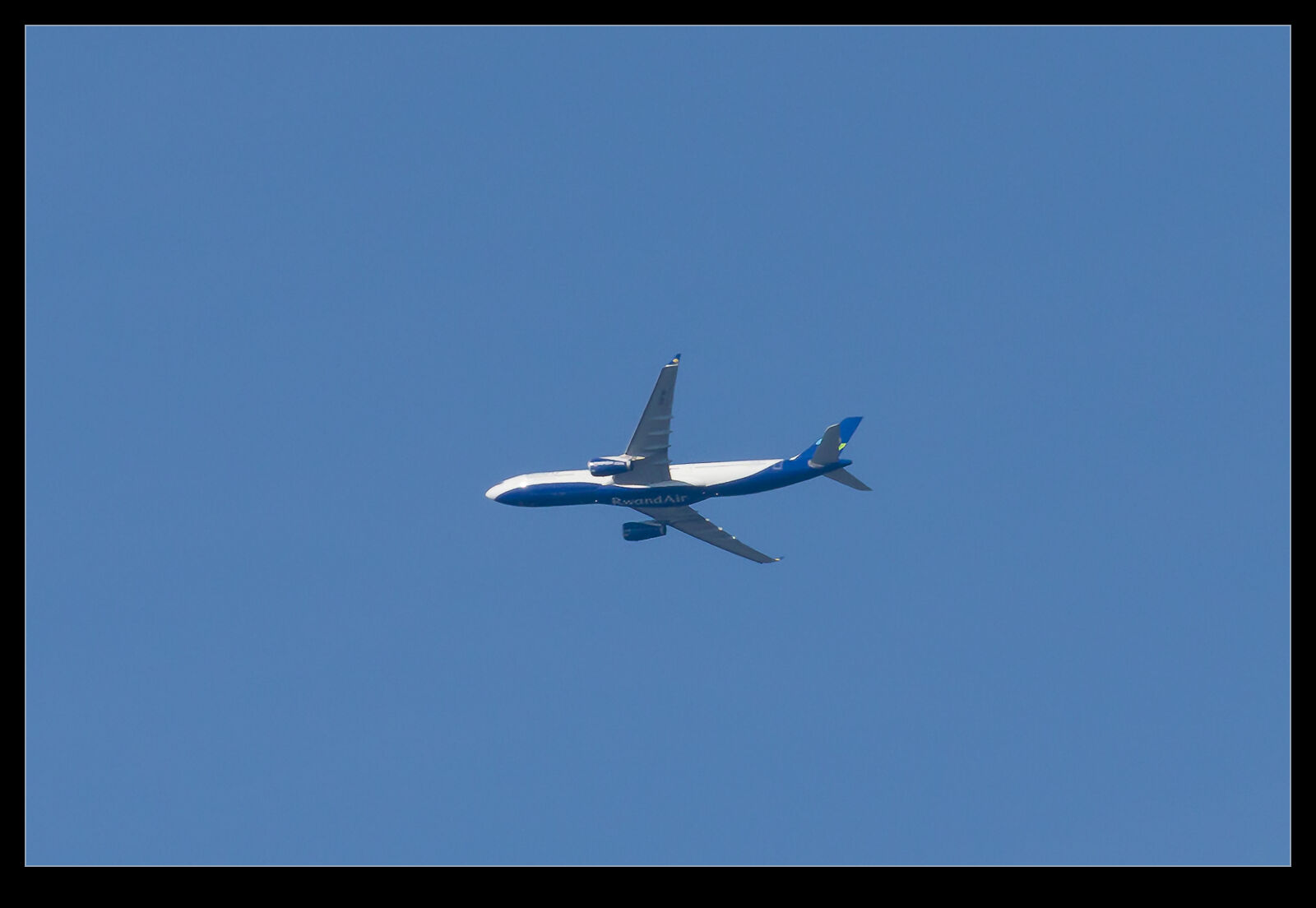 While walking along the Thames, there were plenty of aircraft overhead making their approach to Heathrow. I wasn’t too focused on them and was instead photographing the scenes along the river. I did look up as one jet came over and it looked like it was in a livery I didn’t recognize so I grabbed a shot with the 24-105 fitted. Turns out this was a Rwanda Air A330. That is something I don’t see every day. I wish I had been using the longer lens but this will have to do.
While walking along the Thames, there were plenty of aircraft overhead making their approach to Heathrow. I wasn’t too focused on them and was instead photographing the scenes along the river. I did look up as one jet came over and it looked like it was in a livery I didn’t recognize so I grabbed a shot with the 24-105 fitted. Turns out this was a Rwanda Air A330. That is something I don’t see every day. I wish I had been using the longer lens but this will have to do.
Close Encounter With A Swan
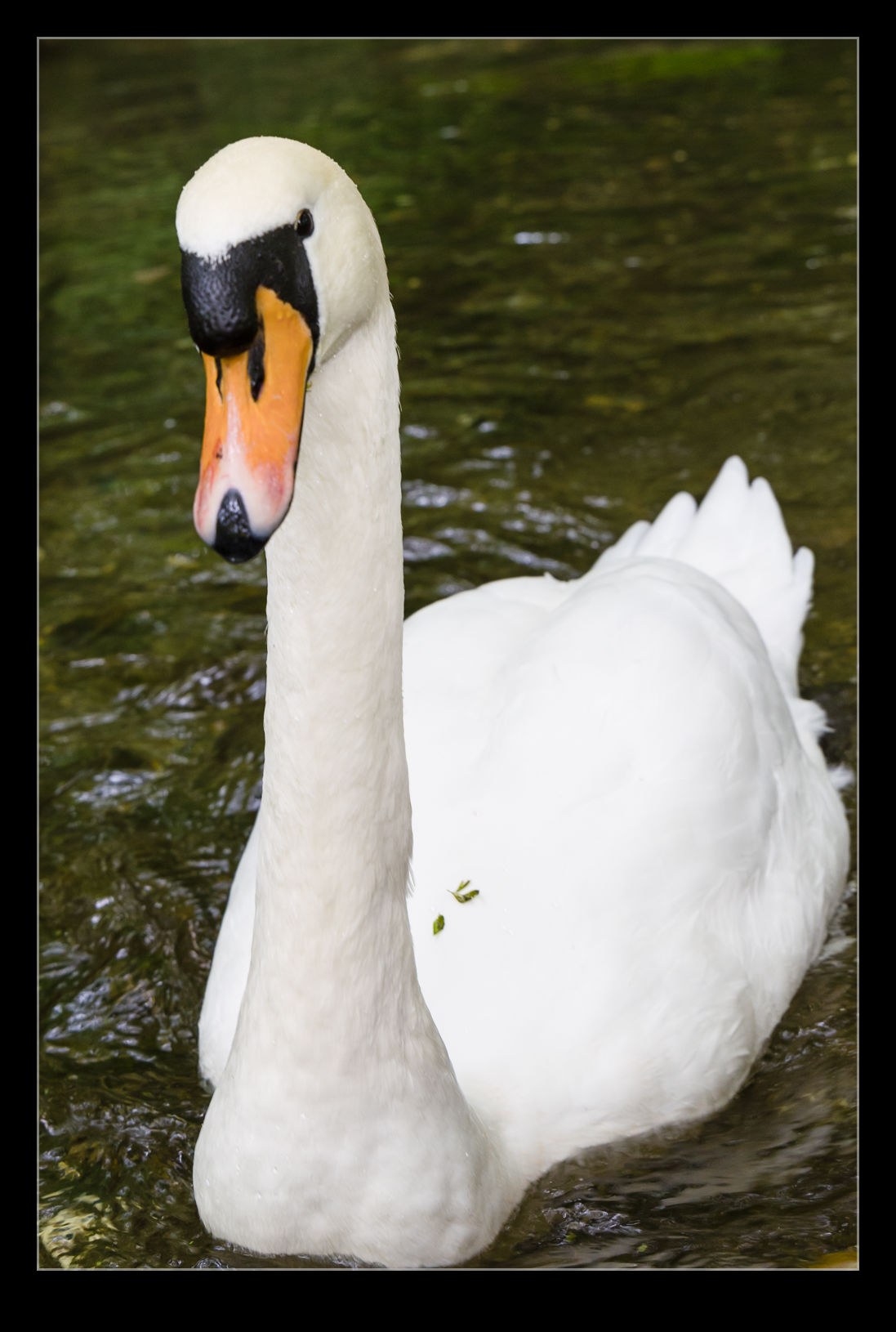 One of the nice aspects of mirrorless cameras is using the tilting screen to see the shot while holding the camera away from you. I took advantage of this when I was near a swan at Mottisfont. We were walking alongside the water and the swan was swimming towards us. I wanted to get a close shot from low down but swans are not always the most friendly beasts. Getting myself down there didn’t seem like a good plan. Holding the camera out while looking at the screen seemed a better idea and the swan, while not totally enthusiastic, was less annoyed that way.
One of the nice aspects of mirrorless cameras is using the tilting screen to see the shot while holding the camera away from you. I took advantage of this when I was near a swan at Mottisfont. We were walking alongside the water and the swan was swimming towards us. I wanted to get a close shot from low down but swans are not always the most friendly beasts. Getting myself down there didn’t seem like a good plan. Holding the camera out while looking at the screen seemed a better idea and the swan, while not totally enthusiastic, was less annoyed that way.
Steep Decent Config On The E190
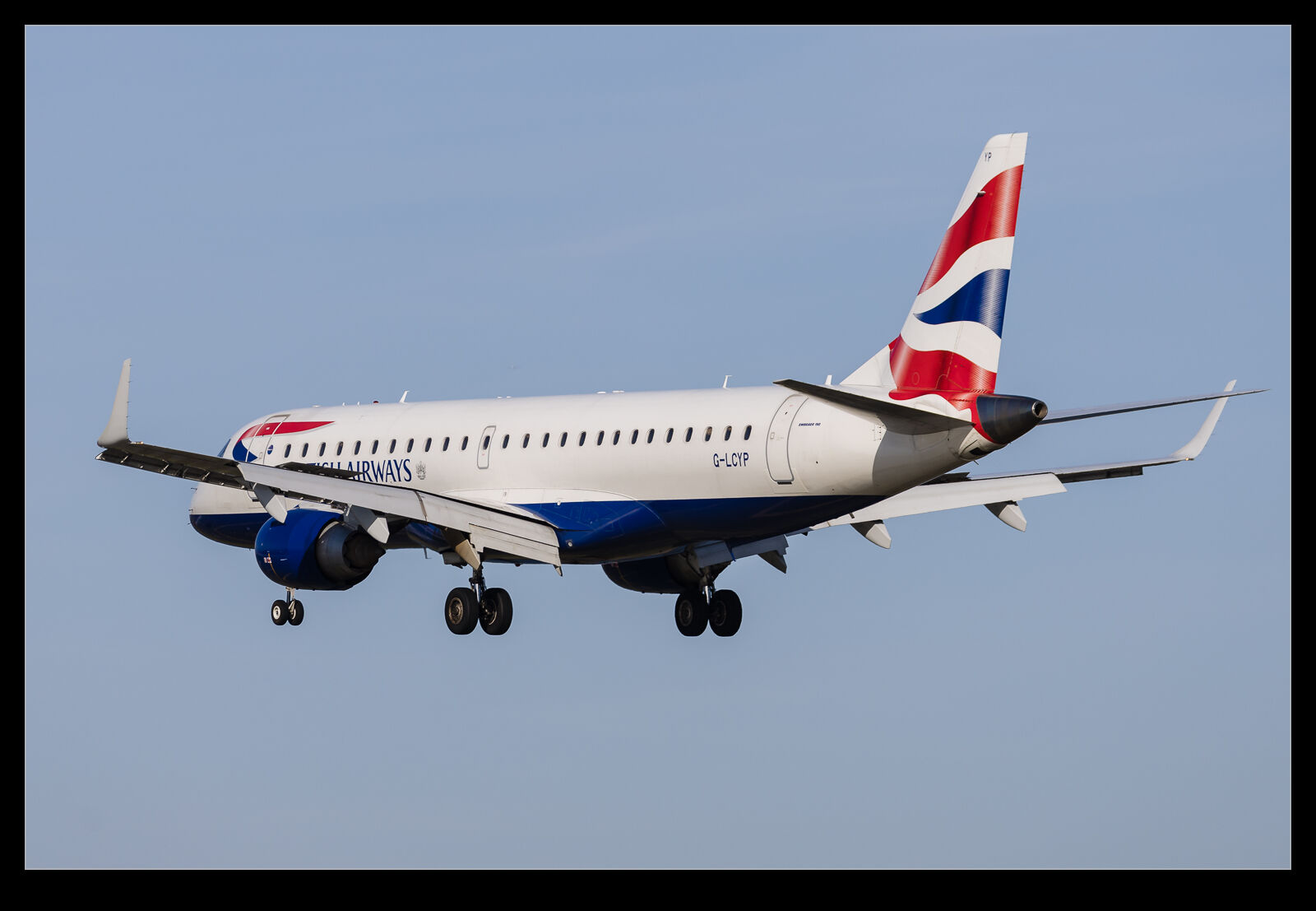 The Embraer E190 is the most common airframe to be seen flying in to LCY these days. British Airways’ Cityflyer operation uses a bunch of them on its services. Anything flying in to LCY needs to be approved for steep approaches. This usually involves a modification to the controls for a steep descent mode. As I watched the E190s descending on the approach, I could see that the spoilers were deployed all the way down. I assume that this is a higher drag configuration that makes the descent angle needed achievable while controlling the speed.
The Embraer E190 is the most common airframe to be seen flying in to LCY these days. British Airways’ Cityflyer operation uses a bunch of them on its services. Anything flying in to LCY needs to be approved for steep approaches. This usually involves a modification to the controls for a steep descent mode. As I watched the E190s descending on the approach, I could see that the spoilers were deployed all the way down. I assume that this is a higher drag configuration that makes the descent angle needed achievable while controlling the speed.
The thing that was more impressive than the descent profile was the departures. The runway at LCY is not long. Watching the jets spool up for departure, I wondered how much of the runway that they would use. As it turned out, they rotated really quickly and the climb out angle was very steep. With the buildings of Canary Wharf ahead, they need to climb quickly but I was quite taken by just how fast they climbed.
The Tehachapi Loop
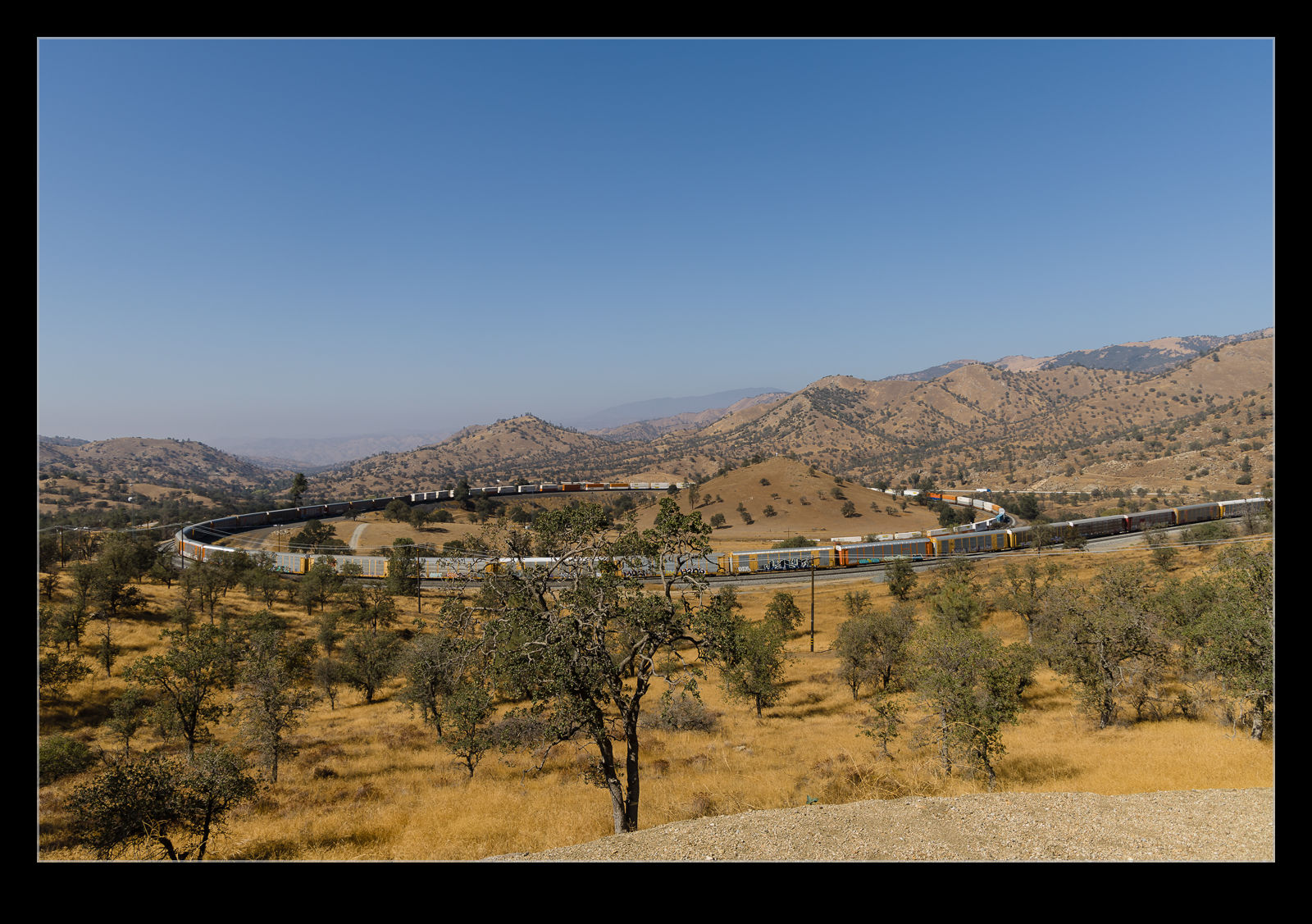 When I first started planning to trip to the Mojave Desert for the Edwards AFB show, a friend of mine in the Midwest was also planning on being there. He said he was also going to visit the Tehachapi Loop. I was vaguely aware of it but decided to look it up. While he ended up not making the trip, I took some time on my last day to go across to see the loop for myself. The Tehachapi Pass is a steep climb for a train to make and, in order for it to climb sufficiently in one section, the engineers that laid out the alignment put in a special configuration.
When I first started planning to trip to the Mojave Desert for the Edwards AFB show, a friend of mine in the Midwest was also planning on being there. He said he was also going to visit the Tehachapi Loop. I was vaguely aware of it but decided to look it up. While he ended up not making the trip, I took some time on my last day to go across to see the loop for myself. The Tehachapi Pass is a steep climb for a train to make and, in order for it to climb sufficiently in one section, the engineers that laid out the alignment put in a special configuration.
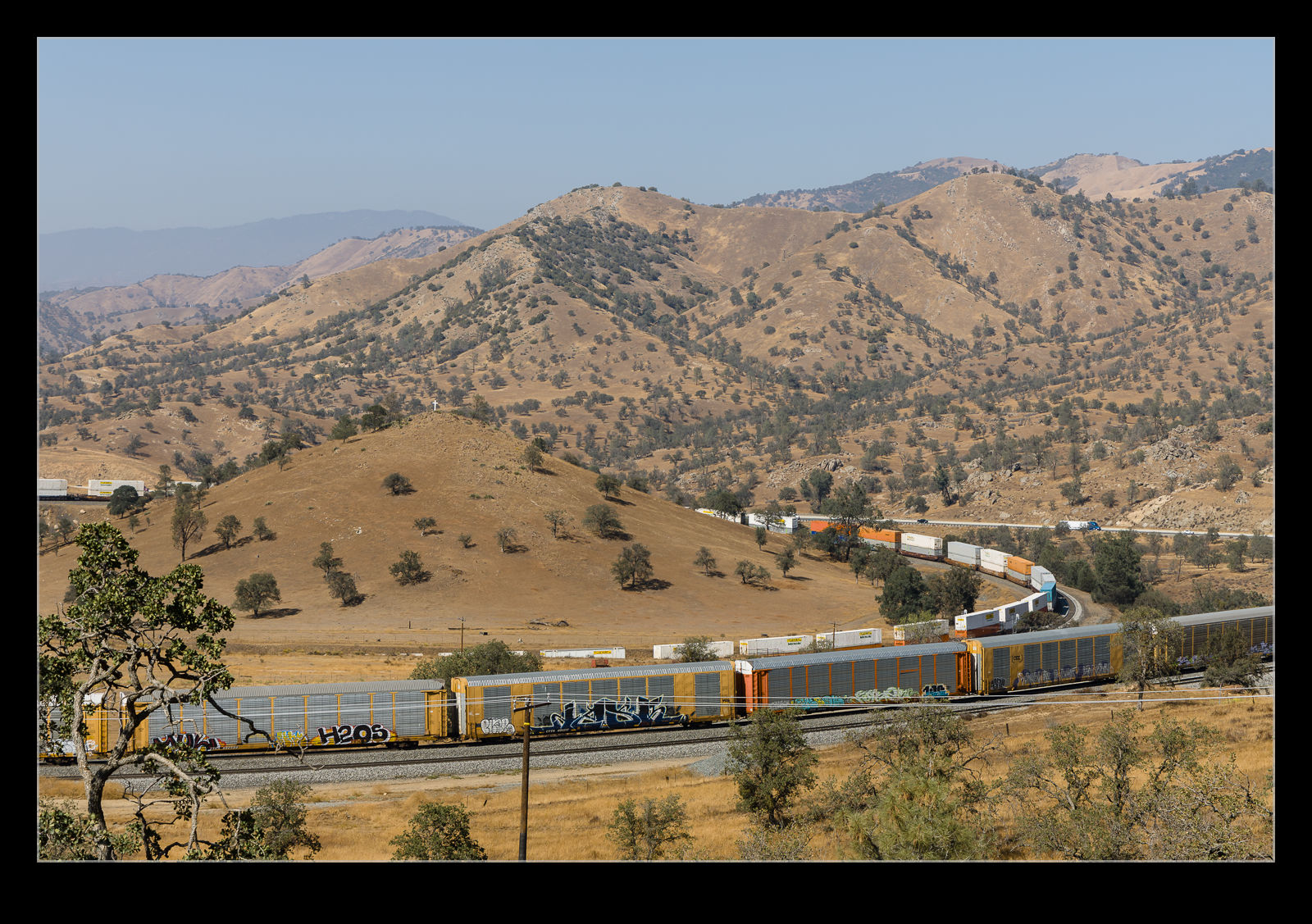 The trains make a 360 degree climbing turn and, given the length of the trains, the leading part of the train will pass over the top of the back end of the train as it climbs. It is quite something to have a long train twisting around on itself as it climbs the grade. Of course, descending is the reverse but that is less dramatic because the train is braking whereas the climbing trains are working flat out to make it up the hill. The sounds of the locomotives at high power reaches you long before they come in to sight.
The trains make a 360 degree climbing turn and, given the length of the trains, the leading part of the train will pass over the top of the back end of the train as it climbs. It is quite something to have a long train twisting around on itself as it climbs the grade. Of course, descending is the reverse but that is less dramatic because the train is braking whereas the climbing trains are working flat out to make it up the hill. The sounds of the locomotives at high power reaches you long before they come in to sight.
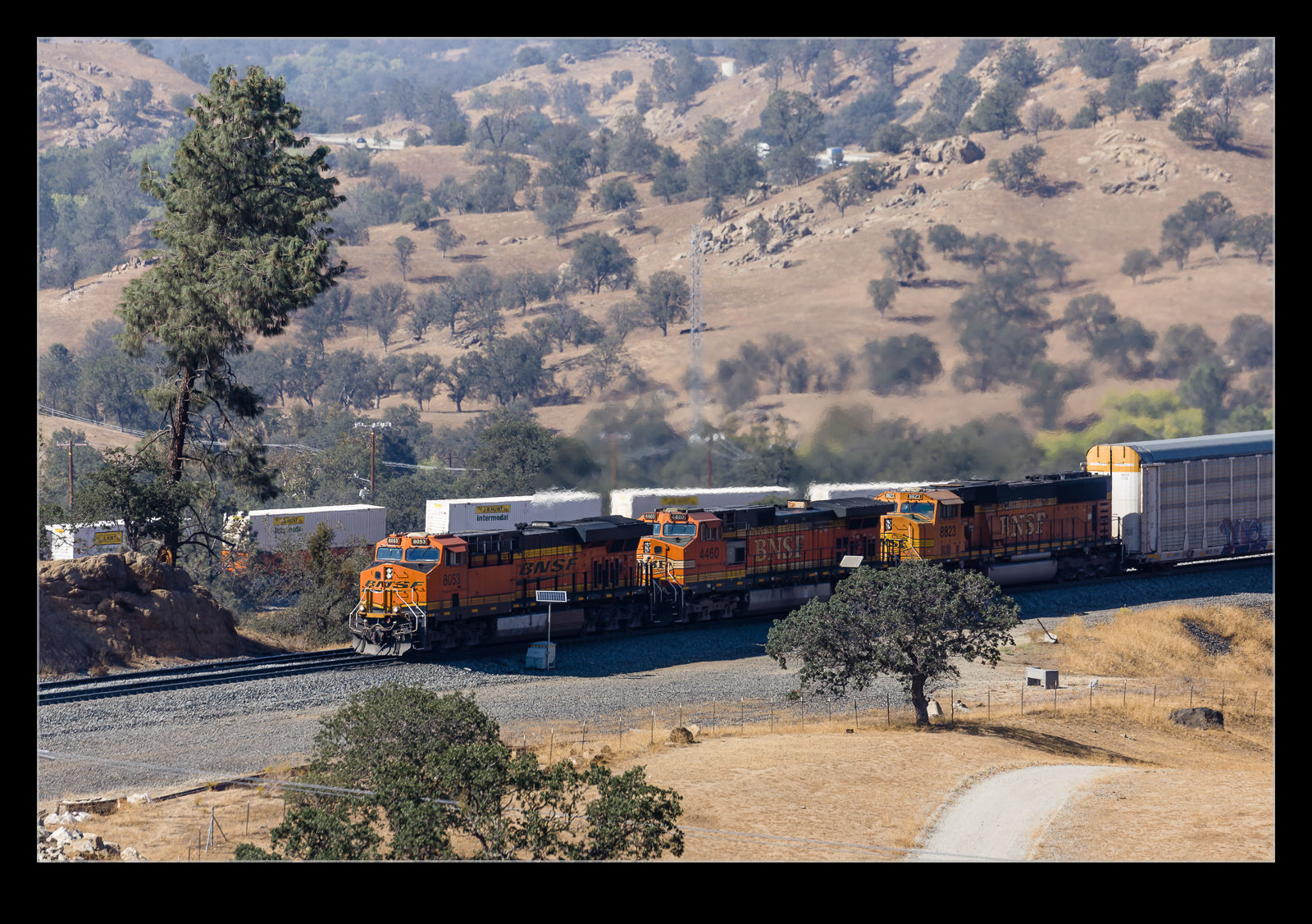 When I got there, I had no idea whether I would see a train or not. I had plenty of time but I didn’t know whether the trains were regular on a Sunday. Fortunately, it wasn’t long before a train came into the loop heading down the hill. I watched it negotiate the curves and the parts of the train appear and disappear. The interesting news was, as it got a little further down the hill, it stopped. This looked promising in that it was probably holding for a train coming up the other way. Sure enough, it wasn’t long before the sounds of multiple locos pulling hard came up the slope.
When I got there, I had no idea whether I would see a train or not. I had plenty of time but I didn’t know whether the trains were regular on a Sunday. Fortunately, it wasn’t long before a train came into the loop heading down the hill. I watched it negotiate the curves and the parts of the train appear and disappear. The interesting news was, as it got a little further down the hill, it stopped. This looked promising in that it was probably holding for a train coming up the other way. Sure enough, it wasn’t long before the sounds of multiple locos pulling hard came up the slope.
 There were four locos on the front of the train dragging their load towards the summit of the pass. The cars were stretched out behind them down the grade and, at the back (long after the lead locos had gone), another pair of locos were bringing up the rear. With the train safely by, I decided I wouldn’t hang around to see if there was more traffic. I had a drive back to the airport to do and didn’t need to wait around just in case.
There were four locos on the front of the train dragging their load towards the summit of the pass. The cars were stretched out behind them down the grade and, at the back (long after the lead locos had gone), another pair of locos were bringing up the rear. With the train safely by, I decided I wouldn’t hang around to see if there was more traffic. I had a drive back to the airport to do and didn’t need to wait around just in case.
